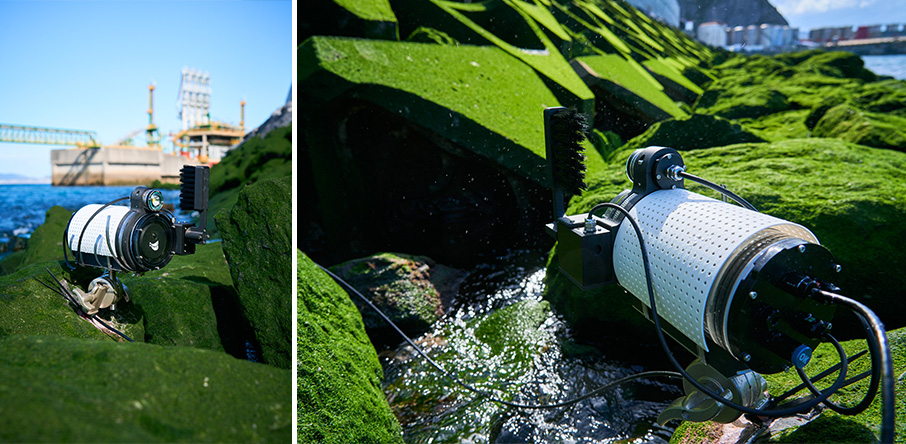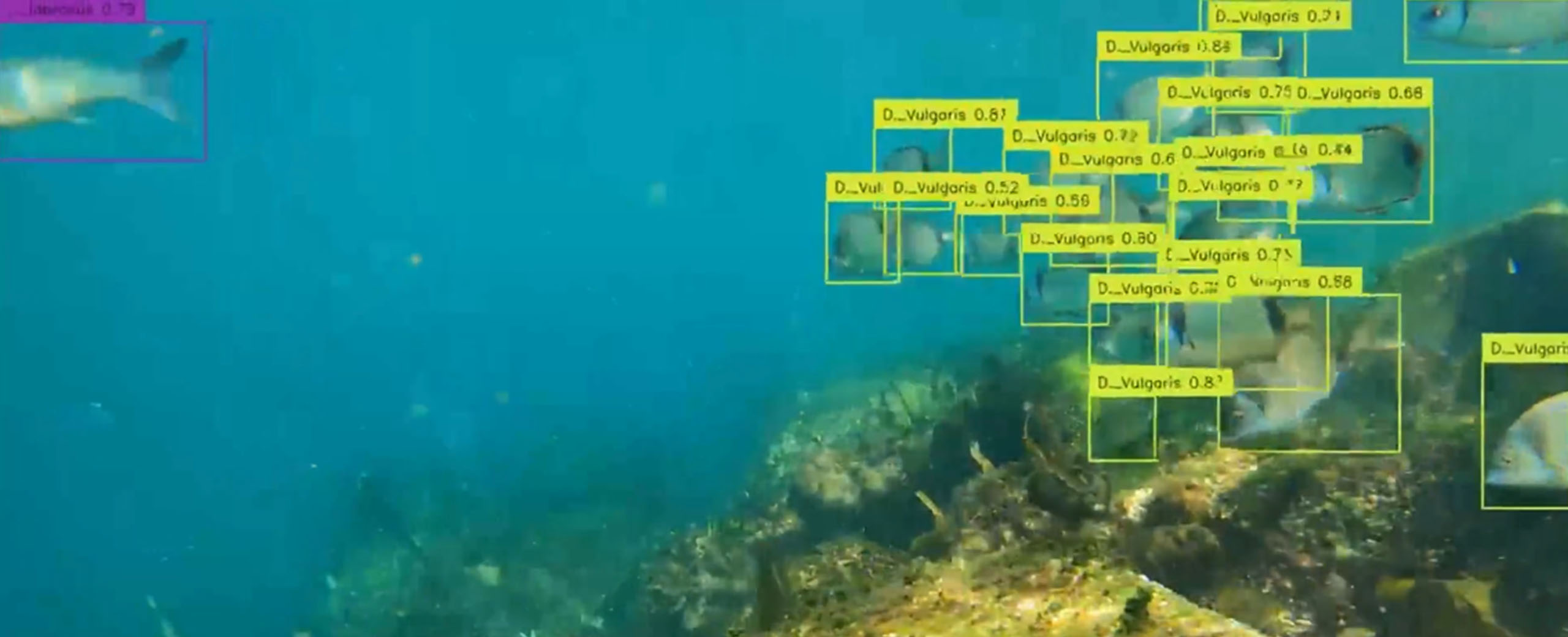For one of our recent projects, we apply newly developed technology, using underwater cameras and Artificial Intelligence (AI)-based analysis to measure and report on marine biodiversity and ecosystem development.
ECOncrete and the Port of Bilbao are partnering with Anemo Robotics to capture and analyze footage from underwater cameras around the new Coastalock revetment and corresponding control sites. The unique capabilities include continuous, year-long photography, AI-supported monitoring of fish activity and other mobile organisms.
Anemo Robotics, a startup from the Technical University of Denmark (DTU), collaborates closely with our marine biologists to align its technology with ecological research needs. The 12-month dataset will provide insights into fish abundance, behavioral patterns, and the interaction of marine life with ECOncrete’s nature-inclusive armoring structures.
By analyzing patterns such as fish residency times, movement heatmaps, and community succession stages among sessile organisms, the project aims to deepen understanding of how nature-inclusive infrastructure supports marine ecosystems over time.
Exploring AI Capabilities To Monitor Ecological Performance
In addition to Anemo Robotics’ innovative AI reporting and monitoring approach, the continuous data and visual stream across day-night cycles, tides, and seasons allows ECOncrete’s biology team to assess how different species interact with and utilize the habitats in our Coastalock units, providing valuable information to predict ecological impact of installations and to inform planning and design optimizations.
This project is part of our ongoing effort to generate scientific data, also with the help of cutting-edge AI-based monitoring, to reliably predict ecological outcomes and to report on the ecological performance and benefit of nature-inclusive solutions.
Interview: Exploring AI Monitoring with Anemo Robotics
This interview has been edited for clarity and length.
Nejc Novak, Co-founder of Anemo Robotics, speaks with ECOncrete about the project.
Q (ECOncrete): Can you tell us about Anemo Robotics and your background?
Nejc Novak (Anemo Robotics): Sure. I studied mechanical engineering in Slovenia and also worked in nature documentary production. Before founding Anemo Robotics, we collaborated with Econcrete and DTU Aqua on the Living Ports project in the Port of Vigo – an early experience that highlighted the need for continuous, non-invasive marine biodiversity monitoring. My co-founder, Biel, is an IT engineer with experience in innovation consulting. We started Anemo Robotics to modernize marine biodiversity monitoring.
Q: What advantages does your continuous monitoring system offer compared to traditional methods like diver surveys?
Nejc: Traditional methods are costly, disruptive, and offer poor temporal resolution. Our live monitoring allows data capture every day, even every hour, which provides much richer ecological insights. It helps overcome the bias of only monitoring “good” or “bad” visibility days.
Q: How has your system evolved from your early projects?
Nejc: We started with off-the-shelf cameras like GoPros, but they weren’t practical for long-term use. For the Bilbao Project, we built our own cameras with anti-biofouling systems, long battery lives, and live-stream capabilities, which significantly reduce maintenance needs and improve data quality.

The specialized monitoring cameras, post installation. Images: Anemo Robotics.
Q: How did you collaborate with ECOncrete’s marine biology team?
Nejc: We are working closely with ECOncrete’s marine biology team from defining monitoring goals, through site selection and camera installation, to training AI models for species recognition and interpreting the collected data to support ecological analysis.
Q: Beyond the Port of Bilbao, what future applications are you exploring?
Nejc: We’re expanding into offshore infrastructure, including wind farms and oil and gas, where environmental monitoring is critical. Eventually, we aim to create autonomous underwater monitoring stations for governments and NGOs, providing continuous ecological data.
Q: Have you seen anything particularly interesting in the Bilbao footage so far?
Nejc: We’re just starting to review it, but initial impressions show Bilbao has a rich and lively ecosystem compared to many sites we’ve worked in. It’s very promising.
As the marine infrastructure sector increasingly adopts ‘habitat creation’ and ‘biodiversity uplift’ as a priority, ECOncrete continues to focus on measurable, science-based ecological performance to predict and monitor long-term ecological outcomes, to inform design and engineering improvements, and to help set meaningful regulatory standards. Sign up for our newsletter and follow us on LinkedIn to receive updates.
